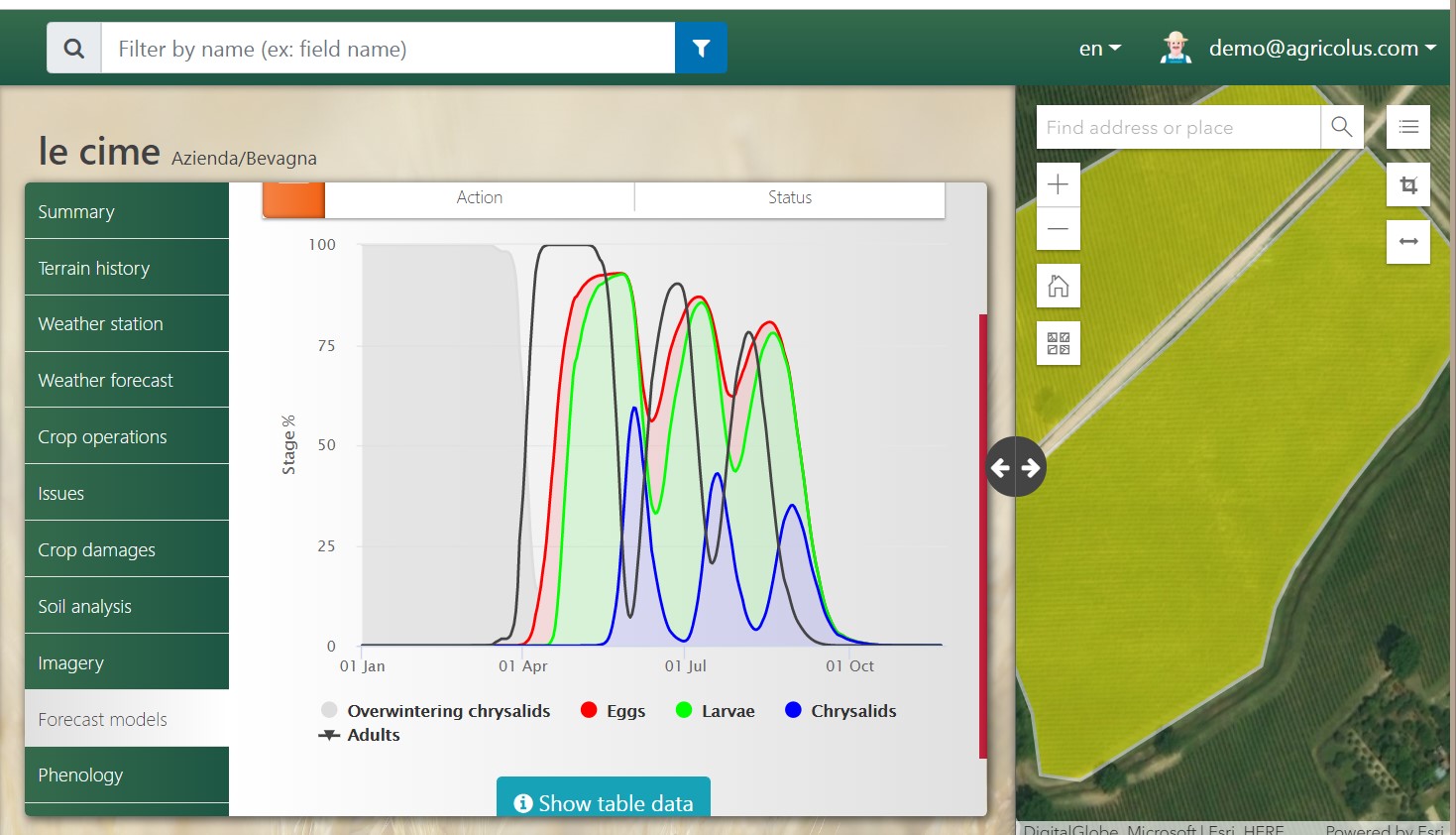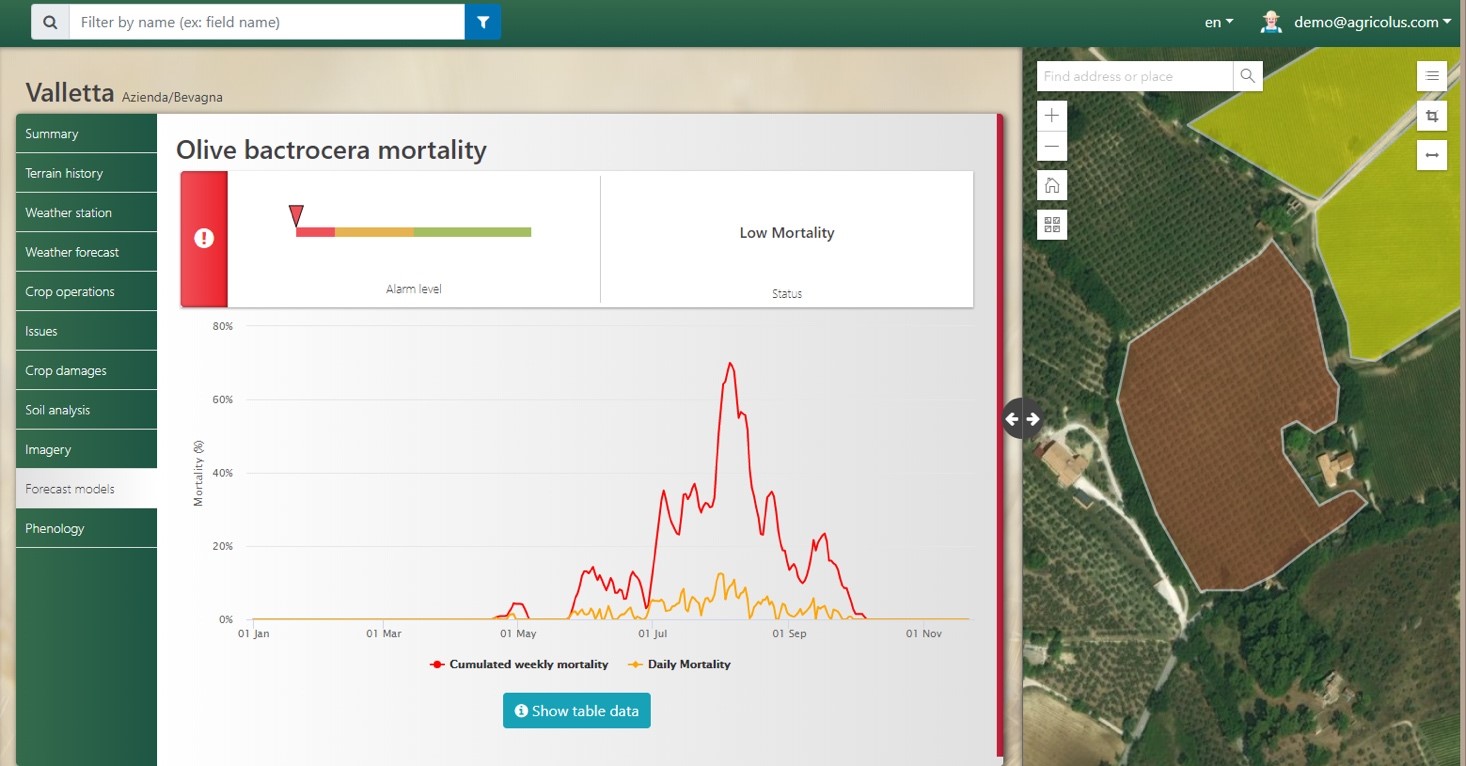Models in agriculture, both empirical and mechanistic, are tools for describing phenomena in a simple way by using external variables.
Empirical models are based on field data analysis in order to identify mathematical and statistical relations between measured data and environmental variables. Before being used as a support for agricultural operators, these models want to be validated and calibrated, in particular when they are used in different environments compared to the ones where they have been developed.
Mechanistic models are based on the deep knowledge of system biology which must be described; forecast modelsIare are indispensable tools for the modern agriculture: they improve the comprehension of phenomena and the decisional process, allowing to analyze consequences of choices taken.
Forecast models for oliveculture and viticulture
In oliveculture and viticulture modelling is an important decision support tool, as it allows to carry out simulations based on the meteorological trend detected in the field:
- water and nutritional balance
- life cycle of pathogens and insects in order to provide practical guidance on the critical stages that need to be monitored more closely and on any action that may be necessary.
This type of model requires a constant survey of the weather conditions recorded by an agro-meteorological shed (at daily and/or hourly pace).
The use of forecast models in viticulture and oliveculture also makes it possible to achieve a double objective:
- the creation of a control and warning system for activating targeted interventions, safeguarding economic and environmental resources.
- the creation of a database for the development of forecast analysis and planning strategies.
Specific features for olive tree and vine in Agricolus platform
Forecast models for olive tree and vines (OLIWES and GRAPES), which can be integrated into Agricolus Plus, enrich the system by providing effective support for agronomic management and defence.
Agronomic management
The models are able to simulate the phenological development of the crop and estimate the water and nitrogen balance, highlighting stress situations and providing precise information on irrigation requirements (Figure 1) and nutrients based on site-specific inputs.
The aim is to rationalize the resources used in the production cycle promoting a climate-smart agriculture, where inputs are provided only when and where they are needed.
Defence
GRAPEDSS provides simulations on primary and secondary infections of Peronospora (Plasmopara viticola) based on the survey of meteorological and crop parameters, and a phenological model of the grapevine moth (Lobesia botrana) able to simulate the development of the generations that take place during the season and the progression of the various phases within them (Figure 2).
OLIWES is equipped with support models to defend against the olive fruit fly (Bactrocera oleae), an insect capable of causing significant losses due to the premature drop of the olives attached and the lowering of the organoleptic characteristics of the oil.
These models are based on the assumption that the temperature is the abiotic factor that most influences the cycle of the olive fruit fly and the risk of attack. Simulations are provided on the mortality of eggs and young larvae due to high daily maximum temperatures, which may occur during the summer period (Figure 3).
Another model simulates the development of the various generations of olive fruit fly during the season on the basis of thermal accumulations and the passage from one phase to another within a generation, through the use of thermal thresholds. By consulting the model and defining a starting date for the ovidepositions, the development phase is obtained at the time of interrogation, which can be verified in the field, to decide intervention periods and specific active ingredients for the form of development.









